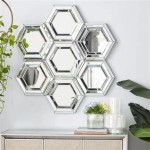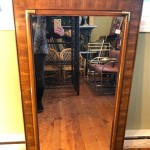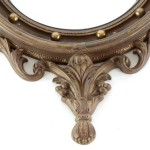Are Expensive Mirrors Worth It?
The reflective surface that graces our walls, offering a glimpse into our own image, can range from a simple, budget-friendly piece to a luxurious, high-end investment. This begs the question: are expensive mirrors truly worth the premium price tag?
Several factors contribute to the cost of a mirror, beyond the mere size and shape. Understanding these elements can help consumers make informed decisions about their purchase.
One key factor is the quality of the glass itself. Inexpensive mirrors often utilize standard float glass, which can have imperfections like waves or distortions, especially in larger sizes. These imperfections can affect the clarity and accuracy of the reflection. High-end mirrors, however, frequently employ low-iron glass. This specialized glass contains less iron oxide, the compound responsible for the greenish tint often noticeable in the edges of standard glass. Low-iron glass offers superior clarity and color accuracy, resulting in a truer reflection.
The silvering process, which applies the reflective coating to the back of the glass, is another significant factor influencing price. Standard mirrors typically employ a process using aluminum and a protective backing. While functional, this method can be susceptible to oxidation and deterioration over time, leading to dark spots or a hazy appearance. Expensive mirrors often utilize a more sophisticated silvering process, sometimes incorporating multiple layers of silver or other precious metals. These processes produce a more durable, long-lasting, and highly reflective surface, resistant to oxidation and damage.
Beyond the glass and silvering, the frame and overall construction significantly impact the price. Inexpensive mirrors may have simple, mass-produced frames made of plastic or thin metal. These frames can be less durable and aesthetically less appealing. High-end mirrors often feature handcrafted frames made from high-quality materials such as solid wood, intricately carved metal, or even precious metals. These frames contribute to the mirror's overall aesthetic value and longevity.
The craftsmanship involved in creating the mirror is another crucial consideration. Mass-produced mirrors are manufactured quickly and efficiently, often with automated processes. This can lead to inconsistencies in quality and finish. Expensive mirrors, particularly those from renowned manufacturers or artisans, often involve significant handwork and attention to detail. This meticulous craftsmanship ensures a higher level of quality, precision, and a unique, often bespoke, final product.
The intended use of the mirror also plays a role in determining its value. A simple, inexpensive mirror may be perfectly adequate for a bathroom or hallway. However, for applications where precise reflection is crucial, such as in a dressing room or for professional makeup application, a high-quality, distortion-free mirror is essential. In these instances, the investment in a more expensive mirror is often justified.
Environmental concerns can also influence the pricing of mirrors. Some manufacturers prioritize sustainable practices, using recycled materials and environmentally friendly manufacturing processes. These mirrors may command a higher price, but they align with the values of consumers who prioritize environmental responsibility.
Beyond the functional aspects, the aesthetic value of a mirror contributes to its price. High-end mirrors can be considered works of art, adding a touch of elegance and sophistication to a space. The frame, the shape, and the overall design contribute to the mirror’s decorative appeal, justifying the higher cost for those seeking a statement piece.
The size of the mirror also directly correlates with its price. Larger mirrors require larger pieces of glass and more complex manufacturing processes, naturally leading to a higher cost. The increased cost of shipping and handling for larger, more fragile items also contributes to their price premium.
Ultimately, the decision of whether an expensive mirror is worth the investment depends on individual needs and priorities. Factors to consider include the intended use of the mirror, the desired level of quality and craftsmanship, the importance of aesthetic appeal, and budget constraints. By weighing these factors carefully, consumers can make informed decisions about whether to invest in a high-end mirror or opt for a more budget-friendly alternative.
The market offers a wide range of mirrors at various price points, catering to diverse needs and preferences. Understanding the factors that influence price allows consumers to select the mirror that best suits their individual requirements and budget.

Are Expensive Mirrors Worth It Bespoke Art Deco Custom Made

Why Are Mirrors So Expensive 5 Important Factors To Know Moyes Glass

7 Rarest Most Valuable Antique Mirrors The Marie Antoinette Mirror Sold For 51 2 Million In 2024 Chronicle Collectibles

7 Rarest Most Valuable Antique Mirrors The Marie Antoinette Mirror Sold For 51 2 Million In 2024 Chronicle Collectibles

Why Are Mirrors So Expensive 5 Important Factors To Know Moyes Glass

7 Rarest Most Valuable Antique Mirrors The Marie Antoinette Mirror Sold For 51 2 Million In 2024 Chronicle Collectibles

Discover The True Beauty Of Antique Luxury With Venetian Mirrors

One Of The Most Expensive Mirrors In World

19 Stunning Home Decor Mirrors That Will Instantly Make Your Space Look More Expensive Lulu Inspired

How To Determine The Value Of An Old Mirror Hobbylark








